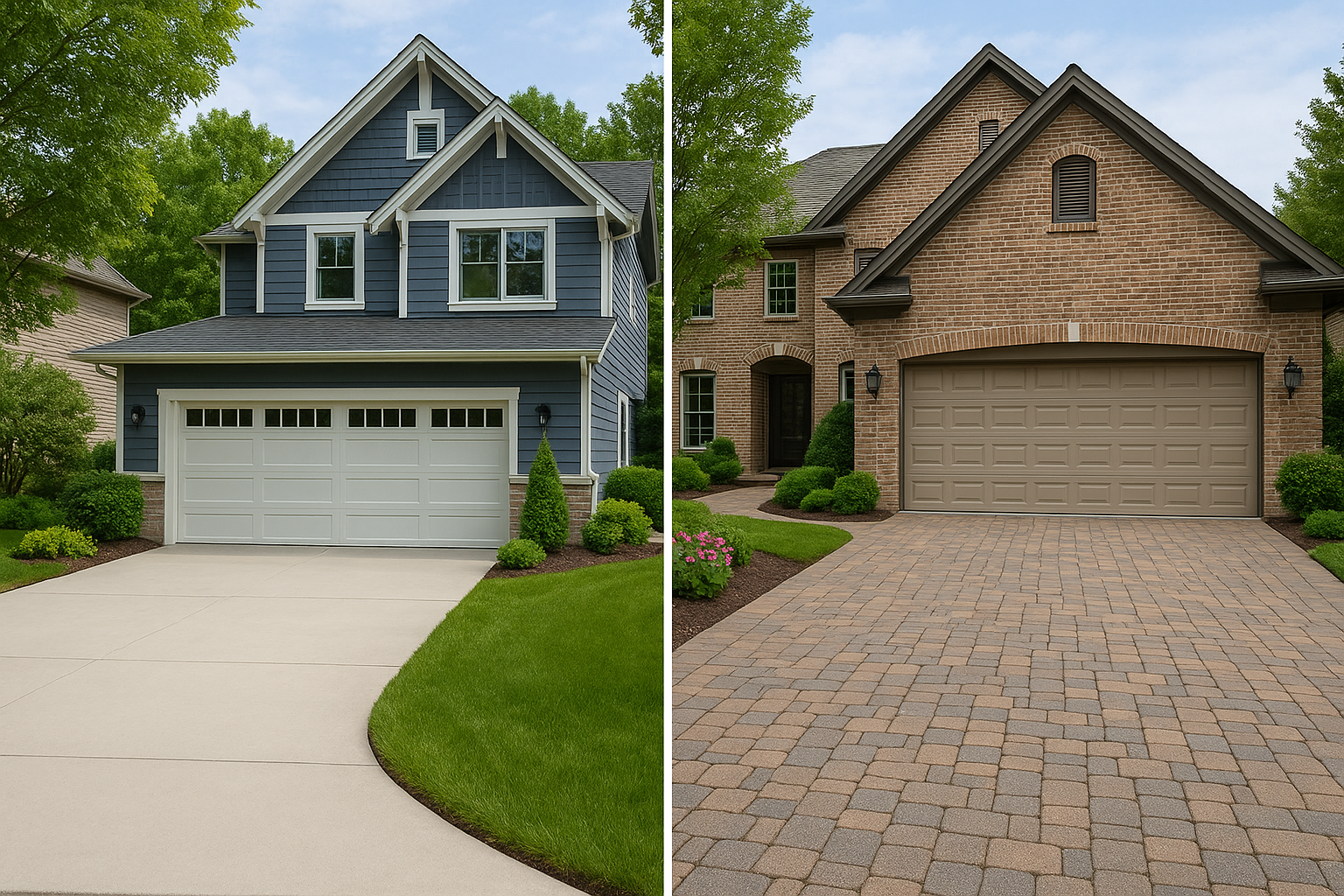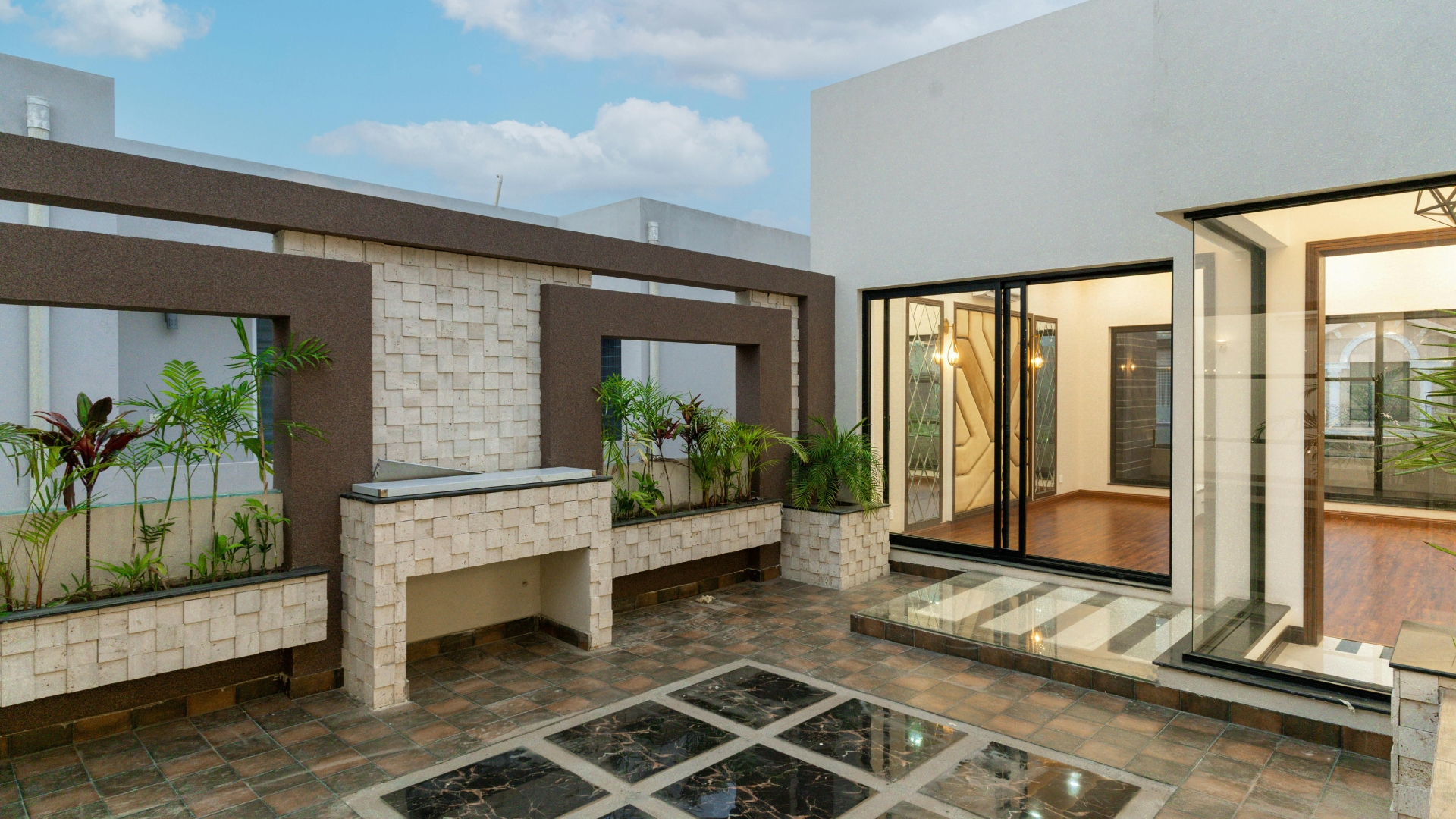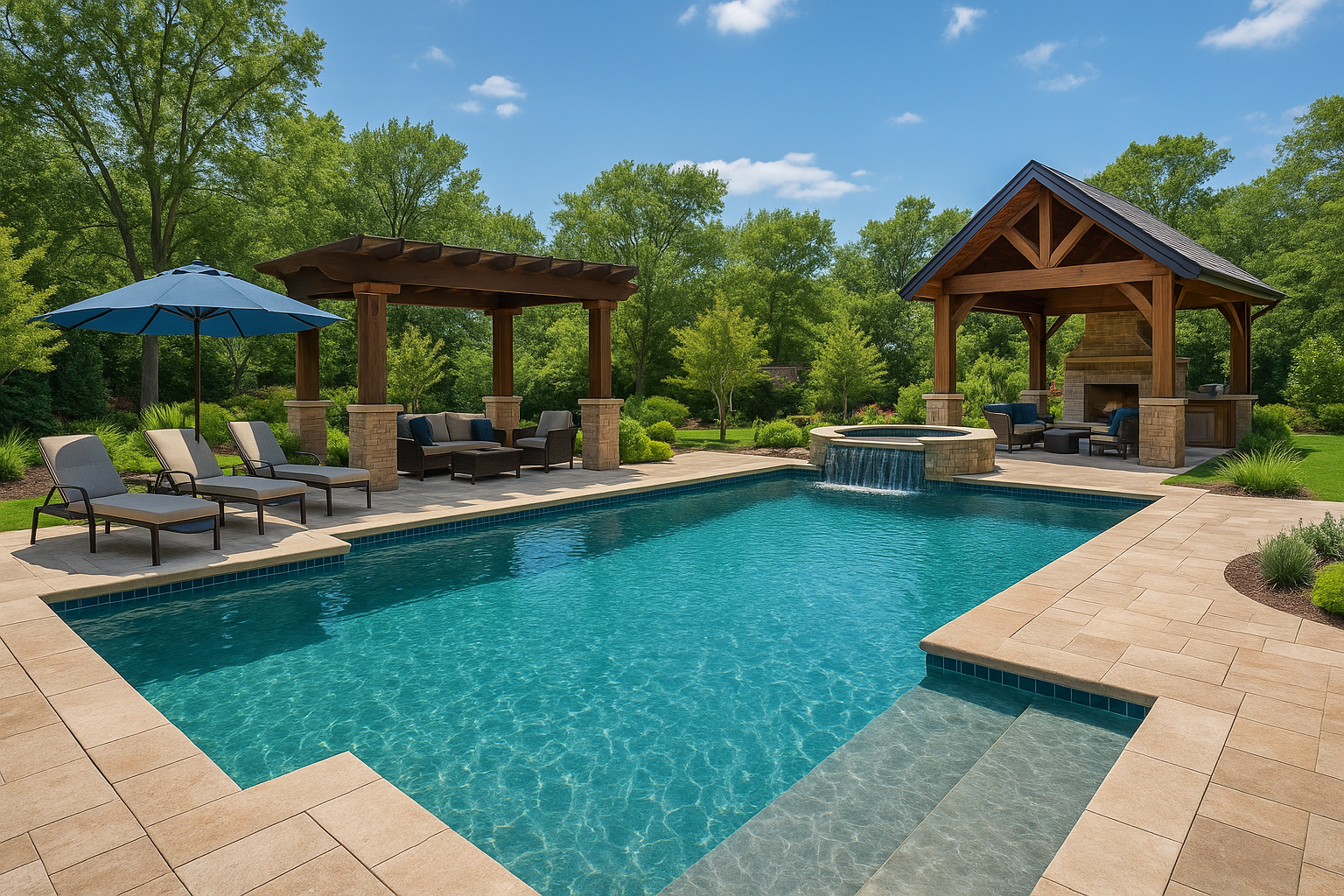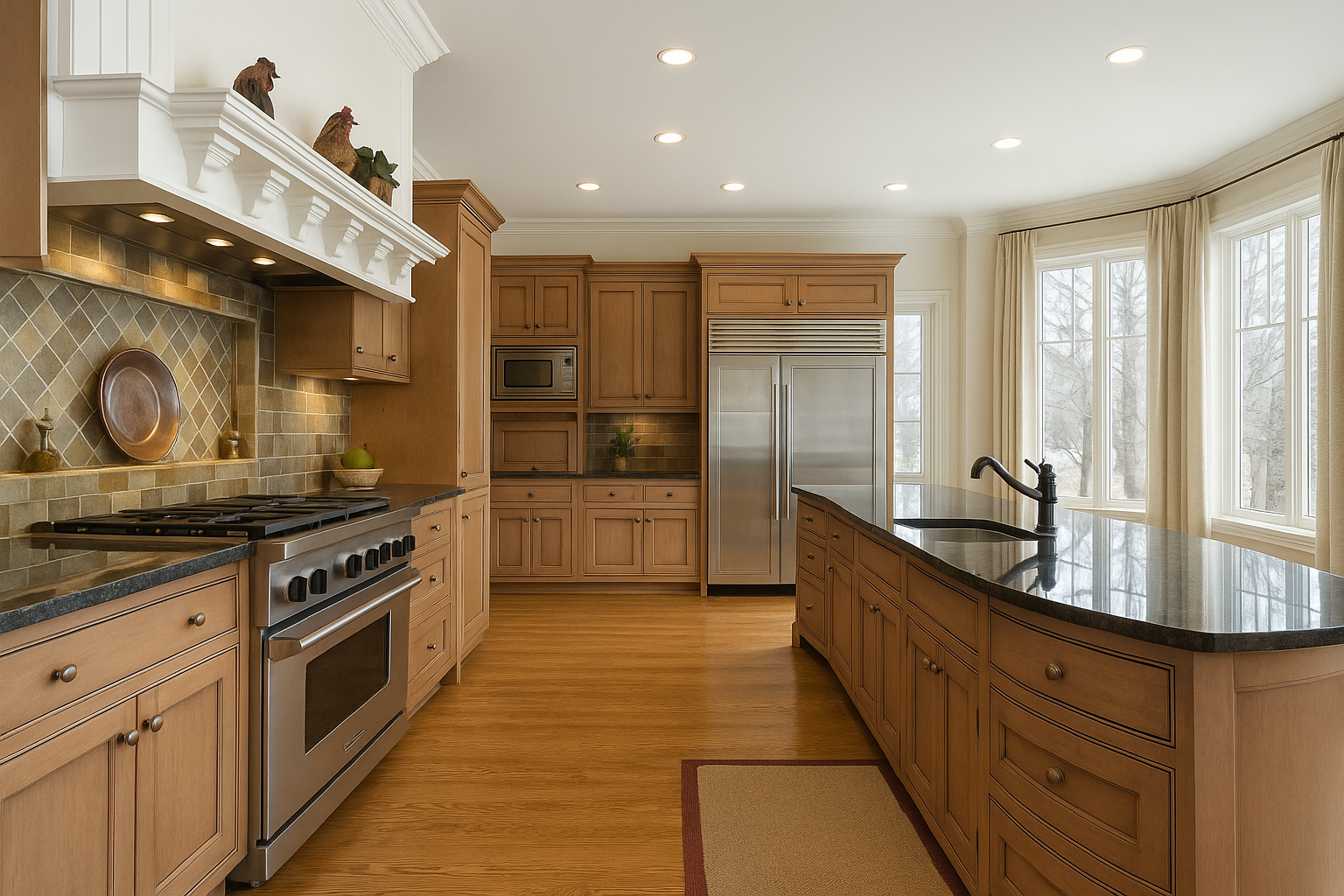Choosing between concrete and pavers for your patio involves weighing costs, durability, aesthetics, and maintenance. Our comprehensive comparison helps you make the best decision for your outdoor space.
Introduction: The Patio Foundation Decision
Your patio foundation choice will impact your outdoor space for decades to come. Whether you're building a new patio or replacing an existing one, the decision between concrete and pavers involves multiple factors including initial cost, long-term durability, maintenance requirements, and aesthetic preferences.
Both concrete and pavers have evolved significantly in recent years, offering more options and improved performance than ever before. Understanding the pros and cons of each material will help you make an informed decision that aligns with your budget, style preferences, and long-term goals for your outdoor space.
Concrete Patios: Versatile and Cost-Effective
Concrete remains one of the most popular patio materials due to its affordability, durability, and design flexibility. Modern concrete techniques offer numerous aesthetic options beyond the basic gray slab.
Types of Concrete Finishes
- Plain concrete: Basic gray finish, most affordable option
- Stamped concrete: Textured to mimic stone, brick, or tile patterns
- Stained concrete: Colored with acid stains or integral color
- Exposed aggregate: Decorative stones exposed for texture and color
- Polished concrete: Smooth, glossy finish for modern aesthetics
Concrete Advantages
- Lower initial cost: Generally 30-50% less expensive than pavers
- Quick installation: Large areas can be completed in a few days
- Seamless surface: No joints for weeds or settling issues
- Design flexibility: Can be shaped into any configuration
- Low maintenance: Occasional cleaning and sealing required
- Durability: Can last 30+ years with proper installation
Concrete Disadvantages
- Cracking potential: Temperature changes and settling can cause cracks
- Difficult repairs: Patches often visible and may not match perfectly
- Limited repair options: Major damage may require complete replacement
- Staining susceptibility: Porous surface can absorb stains
- Slippery when wet: Smooth finishes can be hazardous
Paver Patios: Premium Aesthetics and Flexibility
Pavers offer unmatched design flexibility and easier maintenance, though at a higher initial cost. The modular nature of pavers provides unique advantages for both installation and long-term care.
Types of Pavers
- Concrete pavers: Manufactured in various shapes, colors, and textures
- Natural stone: Flagstone, travertine, granite, and slate options
- Clay brick: Traditional appearance with excellent durability
- Permeable pavers: Allow water infiltration for environmental benefits
Paver Advantages
- Superior aesthetics: Wide variety of colors, patterns, and textures
- Easy repairs: Individual pavers can be replaced without affecting others
- Immediate use: No curing time required after installation
- Flexible surface: Can accommodate ground movement without cracking
- Better drainage: Joints allow water to infiltrate
- Higher resale value: Premium appearance enhances property value
- Reversible installation: Can be removed and reinstalled if needed
Paver Disadvantages
- Higher initial cost: 50-100% more expensive than concrete
- Longer installation time: More labor-intensive process
- Weed growth: Joints can allow weed and moss growth
- Edge maintenance: Requires proper edge restraints to prevent shifting
- Joint sand maintenance: Periodic sand replacement needed
Cost Comparison Analysis
Understanding both initial and long-term costs helps you make a financially sound decision for your patio project.
Initial Installation Costs (per square foot)
- Plain concrete: $6-12
- Stamped concrete: $12-20
- Concrete pavers: $15-25
- Natural stone pavers: $20-40
- High-end natural stone: $25-50+
Long-Term Cost Considerations
- Concrete maintenance: Sealing every 2-3 years ($2-4 per sq ft)
- Concrete repairs: Crack repair ($3-8 per linear foot)
- Paver maintenance: Joint sand replacement every 3-5 years
- Paver repairs: Individual paver replacement ($5-15 per paver)
Durability and Lifespan
Both materials can provide decades of service when properly installed and maintained, but they respond differently to various stresses and environmental conditions.
Concrete Durability Factors
- Freeze-thaw cycles: Can cause cracking in cold climates
- Heavy loads: Excellent weight-bearing capacity
- Chemical exposure: Susceptible to acid damage and staining
- UV exposure: Color fading over time with some finishes
- Expected lifespan: 30-50 years with proper maintenance
Paver Durability Factors
- Freeze-thaw cycles: Individual movement prevents cracking
- Heavy loads: Distribute weight effectively across base
- Chemical exposure: Individual paver replacement if damaged
- UV exposure: Manufactured pavers retain color better
- Expected lifespan: 25-50 years depending on material quality
Maintenance Requirements
Understanding ongoing maintenance helps you choose the option that best fits your lifestyle and maintenance preferences.
Concrete Maintenance Tasks
- Regular cleaning: Pressure washing 1-2 times per year
- Sealing: Reapply protective sealer every 2-3 years
- Crack monitoring: Address small cracks before they expand
- Stain removal: Prompt treatment of oil and food stains
- Winter care: Avoid harsh de-icing chemicals
Paver Maintenance Tasks
- Regular cleaning: Sweep and occasionally pressure wash
- Weed control: Remove weeds from joints, apply preventive treatments
- Joint sand replacement: Add sand to joints every 3-5 years
- Individual repairs: Replace damaged pavers as needed
- Edge maintenance: Ensure edge restraints remain secure
Design and Aesthetic Considerations
The visual impact of your patio significantly affects your outdoor space's overall appeal and your home's value.
Concrete Design Options
- Color integration: Integral color throughout the concrete
- Surface textures: From smooth to heavily textured finishes
- Pattern possibilities: Stamped patterns mimic premium materials
- Border treatments: Decorative edges and accent bands
- Custom shapes: Unlimited configuration possibilities
Paver Design Options
- Pattern variety: Herringbone, running bond, basket weave, and more
- Color combinations: Mix different colors for custom looks
- Size variations: Combine different sized pavers for interest
- Border accents: Contrasting colors or materials for definition
- Texture mixing: Combine smooth and textured surfaces
Environmental Considerations
Environmental impact and sustainability factors may influence your material choice, especially in areas with drainage concerns or environmental regulations.
Concrete Environmental Factors
- Runoff management: Solid surface directs water to drainage systems
- Heat island effect: Dark surfaces absorb and retain heat
- Material sourcing: Cement production has high carbon footprint
- Longevity benefits: Long lifespan reduces replacement frequency
Paver Environmental Factors
- Improved drainage: Joints allow water infiltration
- Permeable options: Special pavers enhance water management
- Material variety: Natural stone options with lower processing impact
- Reusability: Pavers can be removed and reused elsewhere
Installation Considerations
The installation process affects not only cost but also timing and disruption to your outdoor space.
Concrete Installation Process
- Site preparation: Excavation, base preparation, and forming
- Concrete placement: Single pour for large areas
- Finishing work: Texturing, coloring, and curing
- Timeline: 3-7 days from start to use
- Weather sensitivity: Temperature and moisture affect curing
Paver Installation Process
- Excavation: Deeper excavation for base materials
- Base installation: Multiple layers of gravel and sand
- Paver placement: Individual placement and leveling
- Timeline: 5-10 days depending on size and complexity
- Weather flexibility: Less affected by temperature and moisture
Climate and Regional Considerations
Your local climate significantly impacts the performance and suitability of each material option.
Cold Climate Considerations
- Freeze-thaw damage: Pavers handle temperature cycles better
- Snow removal: Smooth concrete easier for snow plowing
- Ice formation: Both materials can be slippery when icy
- De-icing chemicals: Can damage both materials if used excessively
Hot Climate Considerations
- Heat retention: Light-colored materials stay cooler
- Expansion/contraction: Pavers accommodate movement better
- UV degradation: Quality materials resist fading
- Thermal shock: Sudden temperature changes affect both materials
Making Your Decision
Consider these key factors when choosing between concrete and pavers for your patio project:
Choose Concrete If:
- Budget is the primary concern
- You prefer minimal maintenance
- You want quick installation
- You need a smooth, seamless surface
- Your design is simple and geometric
Choose Pavers If:
- Aesthetics and curb appeal are priorities
- You want easy repair options
- Your soil has settling issues
- You prefer natural materials
- Long-term property value is important
Conclusion: The Right Choice for Your Outdoor Space
Both concrete and pavers can create beautiful, functional patios when properly designed and installed. Your choice should align with your budget, aesthetic preferences, maintenance tolerance, and long-term plans for your outdoor space.
Concrete offers affordability and low maintenance, making it ideal for budget-conscious homeowners who want a clean, functional outdoor surface. Pavers provide premium aesthetics and easier repairs, justifying their higher cost through enhanced property value and visual appeal.
Ready to build your dream patio? Contact Shepherd Construction for a consultation. Our experienced team can help you evaluate your specific needs, site conditions, and budget to recommend the best patio solution for your outdoor living space.




